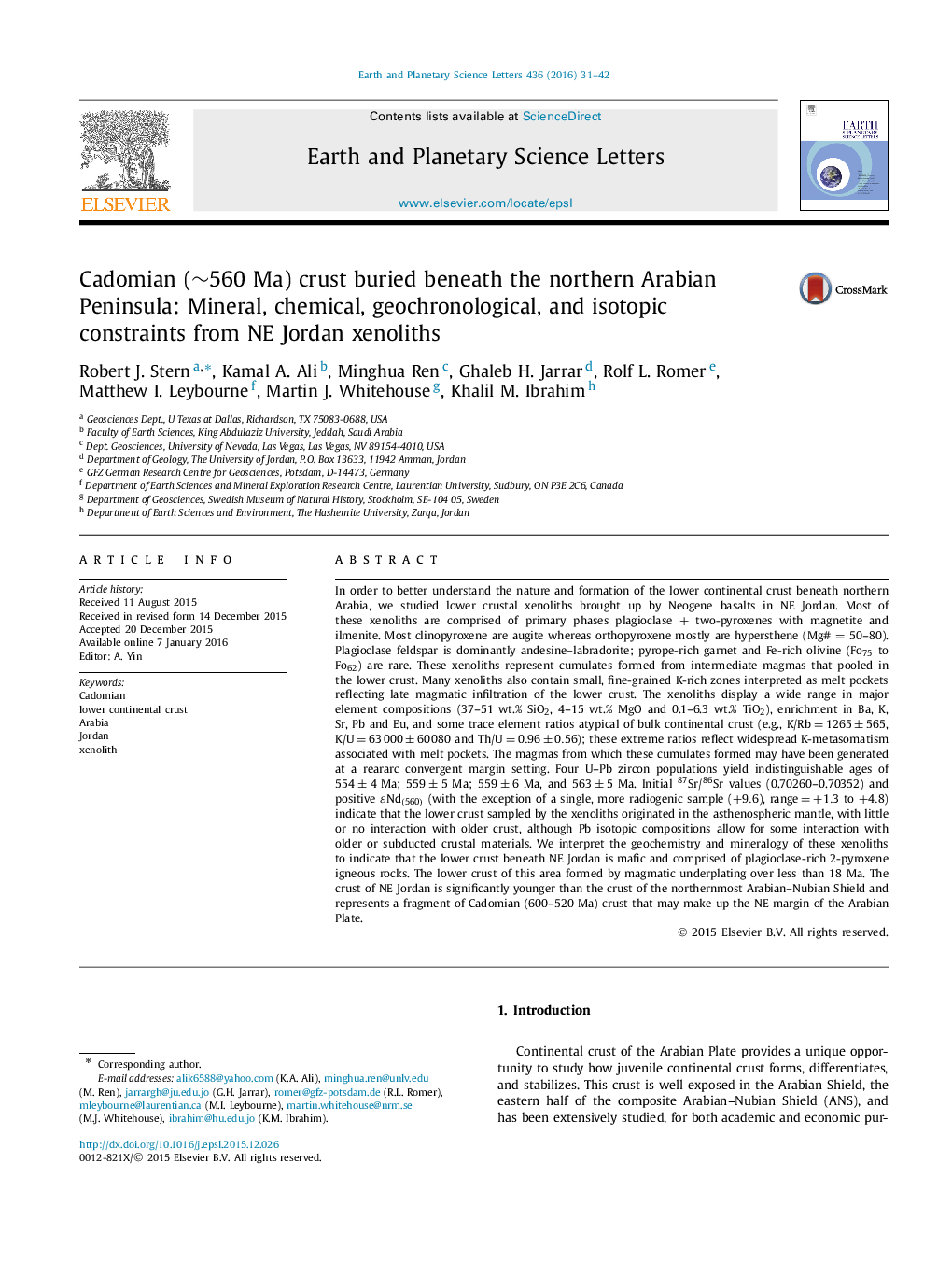| کد مقاله | کد نشریه | سال انتشار | مقاله انگلیسی | نسخه تمام متن |
|---|---|---|---|---|
| 4676949 | 1634720 | 2016 | 12 صفحه PDF | دانلود رایگان |

• Studied crustal xenoliths from NE Jordan brought to surface by eruptions from two Plio-Pleistocene volcanoes.
• Samples of buried lower crust of northern Arabia are ∼555 Ma old indicating presence of Cadomian crust.
• Buried Cadomian crust formed as juvenile additions to crust, possibly at convergent plate margin.
In order to better understand the nature and formation of the lower continental crust beneath northern Arabia, we studied lower crustal xenoliths brought up by Neogene basalts in NE Jordan. Most of these xenoliths are comprised of primary phases plagioclase + two-pyroxenes with magnetite and ilmenite. Most clinopyroxene are augite whereas orthopyroxene mostly are hypersthene (Mg# = 50–80). Plagioclase feldspar is dominantly andesine–labradorite; pyrope-rich garnet and Fe-rich olivine (Fo75 to Fo62) are rare. These xenoliths represent cumulates formed from intermediate magmas that pooled in the lower crust. Many xenoliths also contain small, fine-grained K-rich zones interpreted as melt pockets reflecting late magmatic infiltration of the lower crust. The xenoliths display a wide range in major element compositions (37–51 wt.% SiO2, 4–15 wt.% MgO and 0.1–6.3 wt.% TiO2), enrichment in Ba, K, Sr, Pb and Eu, and some trace element ratios atypical of bulk continental crust (e.g., K/Rb=1265±565K/Rb=1265±565, K/U=63000±60080 and Th/U=0.96±0.56Th/U=0.96±0.56); these extreme ratios reflect widespread K-metasomatism associated with melt pockets. The magmas from which these cumulates formed may have been generated at a reararc convergent margin setting. Four U–Pb zircon populations yield indistinguishable ages of 554±4 Ma554±4 Ma; 559±5 Ma559±5 Ma; 559±6 Ma559±6 Ma, and 563±5 Ma563±5 Ma. Initial 87Sr/86Sr values (0.70260–0.70352) and positive εNd(560)εNd(560) (with the exception of a single, more radiogenic sample (+9.6), range=+1.3range=+1.3 to +4.8) indicate that the lower crust sampled by the xenoliths originated in the asthenospheric mantle, with little or no interaction with older crust, although Pb isotopic compositions allow for some interaction with older or subducted crustal materials. We interpret the geochemistry and mineralogy of these xenoliths to indicate that the lower crust beneath NE Jordan is mafic and comprised of plagioclase-rich 2-pyroxene igneous rocks. The lower crust of this area formed by magmatic underplating over less than 18 Ma. The crust of NE Jordan is significantly younger than the crust of the northernmost Arabian–Nubian Shield and represents a fragment of Cadomian (600–520 Ma) crust that may make up the NE margin of the Arabian Plate.
Journal: Earth and Planetary Science Letters - Volume 436, 15 February 2016, Pages 31–42